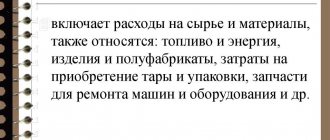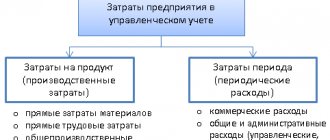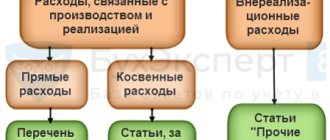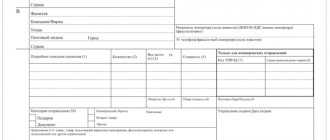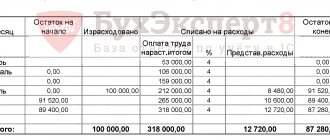- When is VAT paid?
Mandatory payment is divided into direct and indirect . The latter is included in the cost of goods and services; it includes excise taxes and value added taxes, fees on the sale of products and services.
Definition of indirect tax
What does indirect tax mean? A tax on goods and services imposed as a surcharge on the price or tariff. Their main feature is that the burden of payments is borne by the end consumer. Indirect taxes are mandatory and relatively easy to collect. This is explained by the fact that they are included by the manufacturer in the cost indicator of goods and services.
You can see which taxes are direct and which are indirect in the table of direct and indirect taxes.
Indirect taxes in the Russian Federation are divided into:
- individual: they are levied on a separate category of goods that are classified as highly profitable;
- general: they apply to all products, with the exception of some goods that are classified as socially significant.
Please note: in some cases, the type of fees in question can be passed on to the purchasers. An increase in the price of a product due to VAT levied on sales may lead to a reduction in consumer demand. In order to sell the goods, the seller is forced to reduce the price, but no one exempts him from payments. And in this situation, indirect collection acquires similar features to direct collection.
Net indirect taxes are fees paid to the Russian budget minus subsidies and benefits provided to certain legal entities in certain areas of their activities.
The concept of tax and types of taxes in the Russian Federation
Definition 1
A tax is a financial obligation of an individual or legal entity to the state, which must be fulfilled within the time limits established by law.
Taxation resolves issues of income distribution between the state, legal entities and individuals. Taxes reflect the obligation of legal entities and individuals to take part in the creation of financial resources of the state and, acting as an instrument of redistribution, help eliminate emerging violations in the system of distribution of financial resources, restrain or stimulate the development of a certain form of activity.
In modern conditions, taxes are an effective and important part of the government’s financial policy.
Basic principles of taxation:
- uniformity - a comprehensive, unified approach of the state to persons paying tax, from the point of view of the unity and universality of taxation rules;
- certainty - the taxation procedure is strictly established by the relevant legislation, so the deadlines for paying taxes and their amounts are known in advance.
Too lazy to read?
Ask a question to the experts and get an answer within 15 minutes!
Ask a Question
Note 1
Taxes are the main source of revenue for the state budget; they are the main instrument for the redistribution of finances between members of society.
Fiscal policy is the deliberate use of the government's tax and spending functions to achieve the government's macroeconomic goals. In the fiscal taxation system, there are two types of taxation – direct and indirect.
What is considered indirect taxes in Russia - list
Speaker – Elena Minina, Senior Researcher at the Laboratory for Tax System Development, Institute of Applied Economic Research, RANEPA.
All taxes are divided into direct and indirect, there is no third option. Indirect taxes are taxes on goods, works and services and transactions with them, the most well-known of them are value added tax (VAT) and excise taxes. Direct taxes are taxes on income and property, the most famous of which are income tax and property tax.
Indirect taxes are actually levied not on the manufacturer, but on the end consumer, being included in the cost of the product, work or service, but the possibility of transferring the tax burden to the consumer depends on the elasticity of demand.
In Russia, all taxes are codified, i.e. all of them are defined in the Tax Code of the Russian Federation, in its individual chapters. Thus, Chapter 21 of the Tax Code of the Russian Federation is devoted to VAT, Chapter 22 of the Tax Code of the Russian Federation is devoted to excise taxes, and Chapter 25.3 of the Tax Code of the Russian Federation is devoted to state duty. In an accessible form, information about the taxes that are payable by taxpayers can be found on the website of the Federal Tax Service www.nalog.ru. The list of indirect taxes is below.
VAT – Value Added Tax
Indirect taxes include VAT. This indicator plays a big role in the seller's profit. The added value is subject to taxes. VAT is a type of indirect tax levied on the buyer. It accounts for 40% of the budget. This exceeds the percentage in the formation of the treasury when it comes from direct collections. VAT is paid for each transaction, it does not matter the number of intermediaries through which the products were sent. VAT is paid by the end consumer. All citizens and business entities pay it. VAT has rates that vary depending on what products are sold. Rates vary: from 20% to 0%.
A special feature of VAT is the fact that the tax is not levied on the entire cost of the produced product, work or service, but only on the added value that arose at a specific stage of the creation of the product, work or service. This means that the difference between the VAT billed to buyers and the VAT billed to sellers is paid to the budget. If the difference turns out to be negative, VAT is subject to refund from the budget, which leads to the emergence of tax schemes.
In accordance with Art. 164 of the Tax Code of the Russian Federation in Russia, rates of 0%, 10% and 20% are applied. A zero VAT rate applies, for example, when exporting. A 10% rate applies to basic food products, children's products, most periodicals, a number of medical products, as well as domestic air transportation services for passengers and baggage. In other cases, taxation is carried out at a rate of 20%. Let us note that, for example, in Kazakhstan, another member country of the Eurasian Economic Union (which includes Russia), there is no reduced rate at all, but the VAT rate is only 12%.
When VAT is 0 percent:
- export of products;
- passenger transportation (some types);
- sales of manufactured products;
- provision of services in the housing and communal services sector.
Note that despite the fact that both Russia and the EU have VAT, in the USA, for example, there is no such tax. Instead, the United States applies sales tax, which is also an indirect tax, but simpler in nature in terms of calculating the tax payable to the budget.
Excise tax
An example of an indirect tax is excise tax. Excise taxes in Russia in accordance with Art. 181 of the Tax Code of the Russian Federation taxes alcohol and tobacco products, ethyl alcohol, cars and motorcycles (with engine power over 112.5 kW (150 hp)), motor gasoline, diesel fuel and a number of other goods. Theoretically, excise taxes are imposed on goods that are harmful to health (increasing their value due to the excise tax should stimulate a decrease in the consumption of these goods), as well as goods that bring increased profits. Rates are distinguished by excisable goods; the rate can be ad valorem (as a percentage of the cost), fixed (in the absolute amount), combined (in the absolute amount plus as a percentage of the cost).
Note that historically direct taxes were the first due to the fact that they were easier to collect due to the obviousness of their presence, which concerns, for example, the real estate itself or linking the tax to the number of pipes or windows.
Comparative review
To fully understand how PN and CN differ, you need to do a comparative analysis of them:
| Sign | Direct taxes | Indirect taxes |
| Entity accepting the tax burden | Directly the taxpayer | Buyer |
| Coordination with the state | Direct | Through an intermediate person (seller, manufacturer) |
| Taxable object | Personal property, various types of income | Products sold, services provided |
| Indicators affecting the amount of tax | Amount of income or profit, marital status, type of activity, etc. | Tariffs for services and work, price of products and their type |
| Relationship with financial and economic activities | Straight | There is no |
| Difficulty of counting | Quite difficult | Lightweight |
| Collection rate | Complex | Fast |
| Role in pricing | Accrued at the production stage | Included in the price upon sale |
| Openness | The taxpayer knows how much he will have to pay | The buyer sometimes does not know that he is overpaying due to a trade markup |
What is the difference between direct and indirect taxes - differences, examples
Director of the legal service “Unified Center for Protection” Konstantin Bobrov reports on the differences between direct and indirect taxes that: “Indirect taxes are actually paid by consumers, included in the cost of goods and services. They are not taxed on a specific object, while direct ones are established in relation to a specific object (vehicles, real estate, income). It is impossible to evade them: the consumer, when purchasing a product, pays this tax.”
What is the difference between direct and indirect taxes? VAT, excise taxes, customs duties are types of indirect tax collection. They differ from direct in that they do not depend on a person’s income. Indirect fees are paid by default by the end consumer, as they are included in the cost of goods and services.
Important: excise tax does not have a uniform rate and is set on an individual basis. That is, excise tax exists for each of the groups of products of the same name. His rate is approved for one year, and then for the next 2 years.
For example, property tax is direct, but not indirect, as is direct personal income tax. This fee is required to be paid to the budget only by the person who owns the property (property tax) or has income - personal income tax. If there is no property, you do not need to pay tax. And the same citizen will pay an indirect tax when purchasing goods in any case; the amount of the tax and the need to pay the indirect tax do not depend on his personal data.
The differences between direct and indirect taxes can be displayed in the table.
| indicators | straight | indirect |
| who pays | property owner pays | end-user |
| connection with the state | straight | mediated |
| taxable object | property: movable or immovable | service, product, sold |
| determining factors of bet size | amount of profit received | service and product |
| level of openness | a person or legal entity knows in advance how much he needs to pay | closed nature, the consumer does not know that the price of the goods includes a fee |
| calculations | complex | simple |
| dependence on factors | Yes | No |
All indirect fees are divided into 4 groups:
- Universal: surcharges included, with a few exceptions, in the cost of all goods and services. For example, VAT is an indirect, not a direct tax.
- Individual: they apply to individual products. For example, excise tax, or a fee associated with the purchase of jewelry.
- Fiscal: payment of a fee for obtaining permits. For example, for issuing business licenses.
- Customs duties: export and import duties. They are paid by exporters and importers of goods. They are actually included in the price of the product.
An indirect tax is customs duty. This is a payment paid by companies and individual entrepreneurs who import goods across the border. There is no fixed rate for the duty. The volume of payments is specified in agreements concluded between the Russian Federation and importing countries. Payments are made based on the declaration: it is generated by importers. If an entrepreneur imports certain products into the Russian Federation, the declaration is submitted no later than 15 days from the date of import.
Important: If an entrepreneur imports goods and services, he must write and submit to the tax authority an application for payment of indirect taxes. The document will confirm that the businessman is engaged in importing, which is important for deducting VAT upon import.
Examples of direct taxes
The state, represented by the tax service, knows in advance about the amount of tax revenue from a particular direct tax. This is achieved by organizations providing declarations or other reporting documents in which tax is calculated. Examples of such taxes are given below.
1. Personal income tax (NDFL) is intended to levy a share of their income received in organizations of the Russian Federation. This applies to citizens of the Russian Federation and foreigners working on its territory. The tax rate ranges from 13 to 35%, depending on the type of income received and the status of the person receiving it. The tax goes to regional and local budgets.
For information on how to calculate the tax base, see the publication . ”
Not subject to taxation:
- pensions;
- unemployment benefits;
- maternity benefits;
- donor rewards;
- alimony;
- grants to support science;
- international or Russian awards for the highest achievements in various fields of knowledge and art;
- financial assistance to the family of a deceased employee from the company;
- payments to victims of natural disasters;
- income from the sale of harvested wild berries, mushrooms and other forest gifts of nature;
- income from the sale of houses, apartments and other real estate, provided they have been owned for more than 5 years (for properties purchased before 2021, more than 3 years);
- income from inheritance of property;
- income received as a result of gifts from relatives;
- gifts worth less than RUB 4,000;
- other income under Art. 217 NK.
Read more about income not subject to personal income tax here .
2. Income tax for legal entities, which is the main tax payment for them. Taxpayers for this tax are Russian and foreign organizations operating in the Russian Federation. The object of tax collection is the profit received by the organization as a result of its activities in the production and sale of goods. The tax rate for 2020-2021 is 20%.
Find out how profit before tax is calculated (formula) here.
3. Property tax is levied on companies and individuals.
Property is divided into movable and immovable. The concept of movable and immovable property is given in Art. 130 Civil Code of the Russian Federation. Real estate is considered to be everything connected with the land (subsoil, the land itself, buildings and structures that are located on it). For a building to be considered real estate, it must be impossible to move it from its location without destruction. Communications must be connected to it. Movable property is considered to be everything that does not fall under the concept of real estate: money, shares, deposits, collections, cars, weapons, etc.
From 2021, movable property is exempt from taxation.
The base for calculating the tax is its average annual value, with the exception of objects whose value is calculated at the cadastral value (clause 2 of Article 375 of the Tax Code of the Russian Federation). Tax rates are specified in Art. 380 Tax Code of the Russian Federation. This is a regional tax.
For current information on changes in property tax, see the materials in the special section “Organizational property tax - rates, period, etc.”.
Property tax for individuals provides for the withdrawal of tax on real estate objects specified in Art. 401 of the Tax Code of the Russian Federation. It applies to local taxes. The provisions on the cadastral value of real estate objects also apply here (Article 403 of the Tax Code of the Russian Federation). Tax rates and tax benefits are provided for in Art. 406 and 407 respectively. Tax calculation is carried out by the tax service by sending out receipts for payment.
- Land tax is levied on organizations and individuals who own land plots, taking into account their cadastral value. This is also a local tax. There are land plots in respect of which tax is not levied (clause 2 of Article 389 of the Tax Code of the Russian Federation). The tax rate is established by Art. 394 Tax Code of the Russian Federation. Organizations carry out tax calculation and payment independently. For individuals, the Federal Tax Service calculates the tax by sending them receipts for payment.
For information on the specifics of collecting land tax, see the material “Object of taxation of land tax” .
- Transport tax is classified as regional. It is paid by the owners of cars, airplanes and other vehicles listed in paragraph 1 of Art. 358 Tax Code of the Russian Federation. Tax rates are given in Art. 361 Tax Code of the Russian Federation. Increasing coefficients are provided (clause 2 of Article 362 of the Tax Code of the Russian Federation) for cars costing more than 3,000,000 rubles. The Code allows for a 10-fold increase in the tax rate, subject to the adoption of a corresponding law by the regional authorities. In relation to car owners, different tax rates are provided depending on the year of manufacture of the car and its environmental class. The calculation and payment of transport tax by legal entities is carried out independently, and by individuals - on the basis of notifications from the Federal Tax Service.
What taxes can be classified as indirect?
These are fees that go to the federal treasury and are created as a premium for goods and services. They are sold by the seller. It is his responsibility to include the surcharge in the product or as part of the payment. The tax is not added as income to the company selling the products, it is sent to the state budget. The seller is an intermediary between the state and the population, who pay indirect, but not direct taxes. The seller's income does not decrease, but does not increase either. And the state receives budget replenishment through indirect fees.
Transport tax, land tax, income tax are direct taxes, not indirect.
Entrepreneurs are the (formal) fee payers. Actual – third parties who act as final consumers of goods, services and works.
Property tax, or what is included in direct taxes
Direct taxes allow you to manage the country's economy. They selectively influence industries and contribute to the creation of better conditions for the work of organizations in areas of activity that require state support. They can also create unfavorable conditions for areas of the economy whose development is unacceptable for the state.
Direct taxes include:
- for individuals: personal income tax;
- on property;
- for motor transport;
- to a plot of land;
- Personal income tax for employees;
Advantages and disadvantages of indirect taxes
Advantages:
- efficiency of receipts to the budget;
- stability;
- there is no need for increased control over their entry into the treasury;
- increase in state revenues due to stable and timely receipt of indirect fees;
- For the consumer, these fees are convenient because they do not require the accumulation of funds, they do not have the nature of coercion, and there is no loss of time when paying;
- hidden nature: citizens may not even suspect that they are paying a fee.
Flaws:
- have fiscal significance;
- limit the income of entrepreneurs, since it is not always possible to increase the price of goods in proportion to the indirect collection, especially with an increase in tax.
Basic Calculus, Coming Changes
Another frequently asked question: is VAT a federal tax or a regional one? Article 13 of the Tax Code of the Russian Federation classifies VAT as federal tax payments. Consequently, all income from it goes to the federal budget.
The taxation system with VAT is in practice called ordinary. In addition to this fiscal fee, taxpayers in such a system pay taxes on profit, property, transport, land and other payments established by law related to their activities to the budget.
Currently, there are three tax rates: 18, 10 and 0%. The basic rate is 18%. It applies to most operations. Reduced rates apply to the sale of a certain list of goods and services given in paragraphs 1 and 2 of Article 164 of the Tax Code of the Russian Federation.
Preferential rates of 10 and 0% will continue to apply in the new year 2019. And the rate of 18% will be increased from 01/01/2019 to 20% (Federal Law dated 08/03/2018 No. 303-FZ).
What goods are not subject to indirect tax?
There is a group of goods that have preferential taxation:
- Products for children;
- press;
- medications;
- medical products.
Indirect tax VAT is not paid by certain business entities. These are companies that act as exporters, provide passenger transportation services, and the housing and communal services sector. VAT is not paid by educational institutions, research and scientific organizations, cultural institutions, and medical organizations.
Interesting fact: An example of a fee that is not an indirect or direct tax is a state duty. These are indirect payments to the Russian treasury. The state fee is charged to the user for the provision of legal services. Users contact government agencies, which provide them with services on behalf of the state. State duty is not always paid, that is, the fee is not mandatory. It only needs to be paid if a citizen or organization needs to perform a certain legal action. The amount of this fee is fixed.
Which taxes - direct or indirect - are more beneficial to the state?
One answer to this question is to try to determine which type of taxes brings more funds to the budget.
According to the Russian Statistical Yearbook, published by the Federal State Statistics Service, the total amount of tax revenues of all types and levels to the total budget of the Russian Federation for 2021 amounted to more than 21 billion rubles.
https://www.gks.ru/wps/wcm/connect/rosstat_main/rosstat/ru/statistics/publications/catalog/doc_1135087342078
When grouping the types of tax revenues according to the criterion of classifying them as direct or indirect, we obtain the following results regarding the weight of each group of taxes in the total:
Receipts from the group of direct taxes account for three quarters (75%) of the country's budget.
It should be noted that this calculation does not take into account transfers to all types of insurance funds, the amount of which is comparable to the amount of budget revenue from the most significant tax - the tax for the use of natural resources.
In turn, the share of revenues from the group of indirect taxes is no more than 25% of state revenues. Next, we will briefly discuss the principles of calculating taxes with the largest share and the features of the current structure of the tax system of the Russian Federation.
Tax collections on income of legal entities and individuals
To become an income tax payer, an enterprise must make a profit as a result of its activities. If it does not operate or its activities are unprofitable, it is exempt from direct income taxation. The main representative of this direct fiscal levy is the income tax, the rules for payment of which are prescribed in Chapter 25 of the Tax Code of the Russian Federation. Also included in this category of tax payments are the simplified tax system and UTII.
Individuals pay personal income tax on their income. Such income includes:
- wage;
- royalties;
- profit from business activities (as an individual entrepreneur or from self-employment);
- profit from the sale of property;
- income from the rental of property;
- winnings in lotteries and competitions;
- other taxable income.
At the same time, the employer deducts personal income tax from wages and transfers it to the budget. But still, the payer is directly the employee. From the remaining income, an individual is obliged to calculate personal income tax himself and transfer it to the state budget.
Tax reporting for VAT
VAT payers are required to submit a tax return quarterly. Its form was approved by Order of the Federal Tax Service dated October 29, 2014 No. ММВ-7-3/ [email protected] The declaration must be submitted by the 25th day of the month following the reporting quarter. Tax transfers for the quarter are made in equal installments in three payments no later than the 25th day of each of the three months following the reporting quarter. If the deadline for submitting a report or transferring a payment to the budget falls on a weekend or non-working holiday, then the deadline is postponed to the first next working day (Clause 7, Article 6.1 of the Tax Code of the Russian Federation).
Submission of the report is possible only in electronic form via telecommunication channels (TCS). To do this, the taxpayer must enter into an agreement with the TCS operator, obtain an electronic digital signature, and connect the appropriate software. An exception to this rule is made only for tax agents who are not taxpayers.
Legal documents
- Article 13 of the Tax Code of the Russian Federation
- Article 164 of the Tax Code of the Russian Federation
- Federal Law of August 3, 2018 No. 303-FZ
- Government Decree No. 1137
- By Order of the Federal Tax Service dated October 29, 2014 No. ММВ-7-3/ [email protected]
- Art. 6.1 Tax Code of the Russian Federation

